2013 Banshee Spitfire: Reviewed
Touted as “the DHer’s trail bike” on Banshee’s website and emblazoned with “Born on the Shore” on the seat tube, the latest version of the Spitfire lays down some bold claims. A little while back, we ran an article on our first impressions of the bike, and gave particular mention to the swappable dropouts. While adjustable geometry is certainly an interesting feature, the durability of Banshee’s new platform was a more prominent question when setting out on a long term review.
Simply aim yourself into the crunchiest part of the trail, and hang on as it plows through everything.
Durability
The biggest question I faced when starting out on this bike was simple: would the new Spitfire prove reliable? The V1 Spitfire and Rune were plagued with problems stemming from bushings in the rear end; the new KS Link platform departs significantly from that design, stiffening up the chassis considerably and replacing bushings with bearings.
After four months of frequent Shore rides, bike park sojourns, Whistler rides, and a weekend trip to Williams Lake, I have a simple answer: Yes. Despite all the use (and abuse) that this bike has seen, there have been zero issues with the frame– no play in either pivot, no slop in the DU bushing, not even a peep from the bb. This bike is as durable as a pair of work boots.
There are a number of contributing factors to this ongoing mechanical bliss. The first is the new KS-Link suspension platform. Banshee has eliminated the rocker link from the previous design, repositioned the pivot points, and extended the seat stays to actuate the shock.
Banshee have followed the old engineering equation of less moving parts = less things to go wrong.
By nixing the rocker and crafting the rear triangle to actuate the shock through the seat stays, Banshee has removed one of the biggest sources of flexing and play that affected their prior designs. The redesign of this bike has created a frame that is both clean and supremely stiff, even with 135mm QR rear axle.
The other key feature is that the suspension now runs on sealed bearings, rather than the fast-wearing bushings of old. By making the swap, Banshee has dramatically increased the lifespan of these junctions. I’ll have to hand over the bike before it needs a service, despite hosing it off during the muddy season and the sheer amount of dust it was exposed to during the rain-less summer months.
Endless cycles of mud and dust didn’t bother the suspension one bit.
While the new suspension design may be the most noticeable thing about the Spitfire, there are other details that bring the new Banshee up to speed. Dropper post cable routing, ISCG tabs, and tapered head tubes have become the norm and are employed here; however, a lack of bottle cage bosses is a downside of the KS Link.
A feature that carries over from previous Banshees is the internal ribbing that is used in the stays. While out of sight, it helps to contribute to the overall stiffness of the bike. As a result, Banshee has crafted a rig that you can build up whichever way you like, be it a 26er or 650B, lightweight trail whippet or descent-smashing bruiser– the choice is yours.
Components
The bike we received was a custom-spec build from Banshee’s local distributor Trident Sports. It borrowed heavily from Banshee’s top tier “Team Trail 2×10” spec, but with some sturdy parts that were more suited to our local conditions.
Suspension duties were taken care of by a 160mm Fox 34 Float CTD up front and a Fox Float CTD air shock in the rear, both with Kashima coating. While much digital ink has been spilled and friendships torn asunder over how the CTD platform “like, totally sucks man…” I devised a fiendishly complicated and mechanically taxing workaround: I dialled in the fork while set in “trail” mode, and simply left it alone. The shock worked as advertised, and its plushness was greatly appreciated when I got in over my head.
With the fork and shock set up as they were, I noticed that there was minimal bobbing while pedalling to the top, even in granny gear. The bike was equally at home powering over root-filled climbs as it was grinding up fire roads. Pointing the bike down demonstrated why Banshee has pegged the bike as “the downhiller’s trail bike,” but more on that later.
Along with the more aggressive suspension, the rest of the bike was shorn in parts which put it on the more gravity-oriented side of the trail bike spectrum. The 780mm-wide Answer Pro-Taper bar and chunkier Minion DHF EXO 3C 2.5 tires helped give me more confidence when riding hard down more technical trails. Part way through the season, I opted to put a High Roller 2 on the front, as I found the DHF struggling a bit [the DHF EXO 3C compound is significantly firmer than the DH tread. -Ed.] in the dust that developed over the supremely dry summer.
Left: While the test bike didn’t come with a clutch derailleur, noise wasn’t an issue. Right: Once I had the fork set up to my liking in trail mode, I promptly forgot all about the CTD switch.
It’s worth noting that despite the kit, the Spitfire is still a trail bike at heart. Said hard riding did cause a few minor mechanical issues. The tires were initially set up tubeless, and the rear developed a slow leak after being subjected to a weekend of park riding in Whistler. The rear wheel also came slightly out of true around the same time, which didn’t surprise me as the Sun Ringlé Charger Pro wheels aren’t exactly intended for park use. After a few twists of the spoke wrench the wheels were solid through the test period.
The Avid Elixir 9 Carbon’s also developed a bit of an inconsistent feel about a month into the test. Again, it was another easy fix, this time with a quick lever-only bleed that had them feeling factory fresh afterwards. Since then it’s been clear sailing on the stopping front.
SRAM X9 components handled shifting across the board. Everything was crisp, and worked as advertised, with only minor adjustments as the cables naturally stretched out over the break-in period. If you are planning to build up a frame set on your own, be aware that the Spitfire uses a high direct-mount front derailleur, and plan accordingly. Other drivetrain bits were taken care of by RaceFace with a Turbine crank mated to a 24-36-Bash ring combination.
One thing that had me a bit puzzled was the lack of a clutch derailleur, and the use of only one matchmaker clamp. I suspect that these two points are a result of the bike being an off-spec test model, and shouldn’t be cause for concern. Even without the clutch, I had a hard time picking out chain noise coming from the rear end during rough descents. This was underscored by the fact that after the chain guide failed, and I decided to leave it be, chain noise was still not an issue.
Trident also added a dropper post to the build in the form of a RockShox Reverb. Performance from the Reverb was as expected and it would be sensible to spec a quality dropper on the Spitfire from the get-go – but there is something to be said for leaving that decision to the customer.
After riding for nearly four months solid, I had only one part completely fail on me: the chain guide. Granted, I was never overly kind to it, having smashed it badly out of shape several times. Eventually, the pulley wheel decided to free itself from my service, and vanished into the woods. Godspeed little wheel, wherever you are.
Maybe if I stand outside its window with a boombox aloft over my head, it’ll come back to me…
Overall, I’ve been extremely impressed with the durability of everything that has come equipped on the bike. The few things that did go wrong were relatively minor and simple to fix. Gold stars all round then.
The Ride
Thanks to the bike’s stouter build package, it was never destined to be a climb-smashing, KOM-snatching, uphill speed demon. Rather, it rewarded a steady pedal cadence by simply gliding up to the top in a lower gear. When climbing skyward, I was surprised by the lack of pedal bob. I could make the shock bounce and sway like a palm tree in a breeze by standing up and mashing the pedals in a low gear but it didn’t get me there any faster, and made me look quite foolish.
When pedalling uphill on single track, flow-killing rocks cowered before me and roots shuddered in my presence. The traction was superb – I found myself simply low gear crawling over things I had no right to be getting over at the speed I was going.
The biggest upside to this “steady as she goes” approach means that I was feeling fairly fresh by the time I topped out on my rides, and was able to jump into the fun stuff (a.k.a. riding down) a lot faster than I otherwise would have been able to.
Steadily spinning circles in the rain.
Marshmallows. Down-filled comforters. Over-stuffed couches. These are all things whose plushness pales in comparison with the Spitfire. Early on in the testing, I had set the suspension to be a little bit too firm, which resulted in being bucked around cowboy-style. Once I got it dialled in however, the bike felt virtually bottomless on the descents. The stroke didn’t feel overly progressive until the end, where it ramped up crisply to let you know that you’d reached the limit of its 140mm of rear-end travel. I had to ride this bike far out of my comfort zone in order to get the it to complain about the treatment it was getting and even then, I usually chickened out before things got overly chaotic.
To quote Rob Warner, it was “wetter than a dolphin with a bladder infection” out there.
What makes the Spitfire particularly ideal for riding on the Shore is the ease at which the bike transitions from high-speed ripping to picking its way though the tech. I felt equally confident on the bike sailing down Crank it Up as I did navigating the more complex woodwork on Natural High. This is thanks to the bike’s neutral geometry– a 66.5º head angle and a 74º effective seat angle ensured everything was well-balanced.
Our 2013 Banshee Spitfire, after having received the “Shore” treatment. Frame with CTD shock goes for $2075 CDN.
The excellent suspension combined with the smart parts package made the bike an absolute joy to ride. It rewarded pointing and shooting over finesse, which matches my riding style perfectly. Overall, I came away very impressed with the sheer breadth of terrain that this “trail” bike was able to handle.
Final Words
As I mentioned at the beginning of the review, my biggest question surrounding this bike was one of reliability. After the hammering this bike has received, it’s become clear that Banshee has dealt with the reliability issues of the previous generation while maintaining its burly BC-bred heritage. Four months of hard riding has resulted in zero mechanical issues from the frame. The Teutonic engineer in me is pleased.
Most Trail bikes these days dip below the 27 pound mark with a similar build and pedal more like XC bikes than the AM rigs of yore. While the Spitfire’s 140mm of travel might make you think it’s a pedaler, the reality is it’s much closer to an AM bike than a Trail bike. Descends like a beast, but won’t go uphill fast. It should be noted that the 2014 bike will have internal dropper routing and Keith is rumoured to have knocked a few hundred grams or more out of this frame and the V2 Rune.
With the build kit we received, riding up was tackled with a steady pace. While I wasn’t going to snag any KOM’s on the way up, I never felt that the bike needed to shed weight. Riding down was an absolute delight, with a supremely plush suspension setup that cloaked the amount of travel the bike possessed. For someone who loves their downs and doesn’t mind earning them the long way, this bike might be just the ticket.
Like a little DH prowess in your pedaler? Does the KS Link Banshee turn your crank?
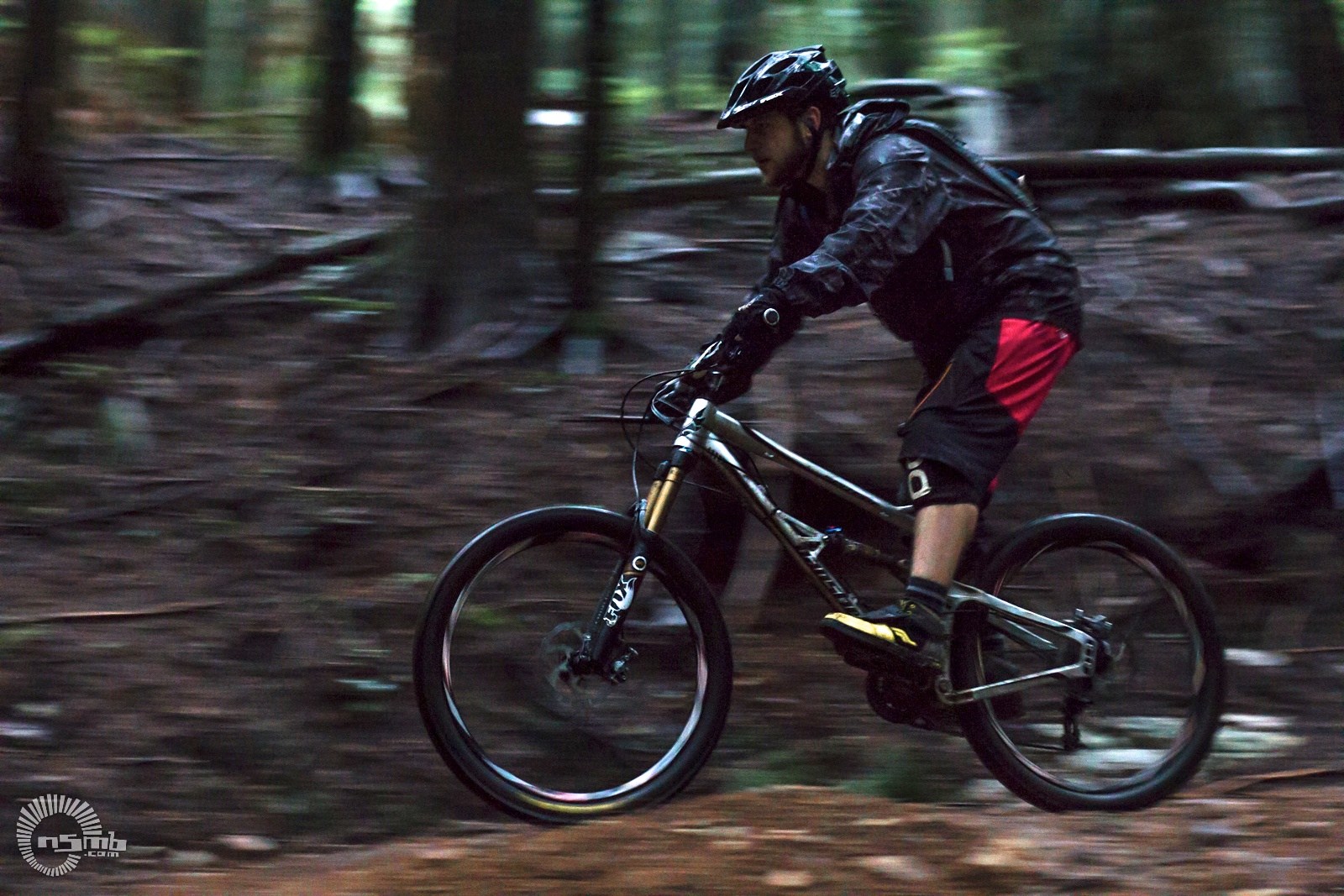
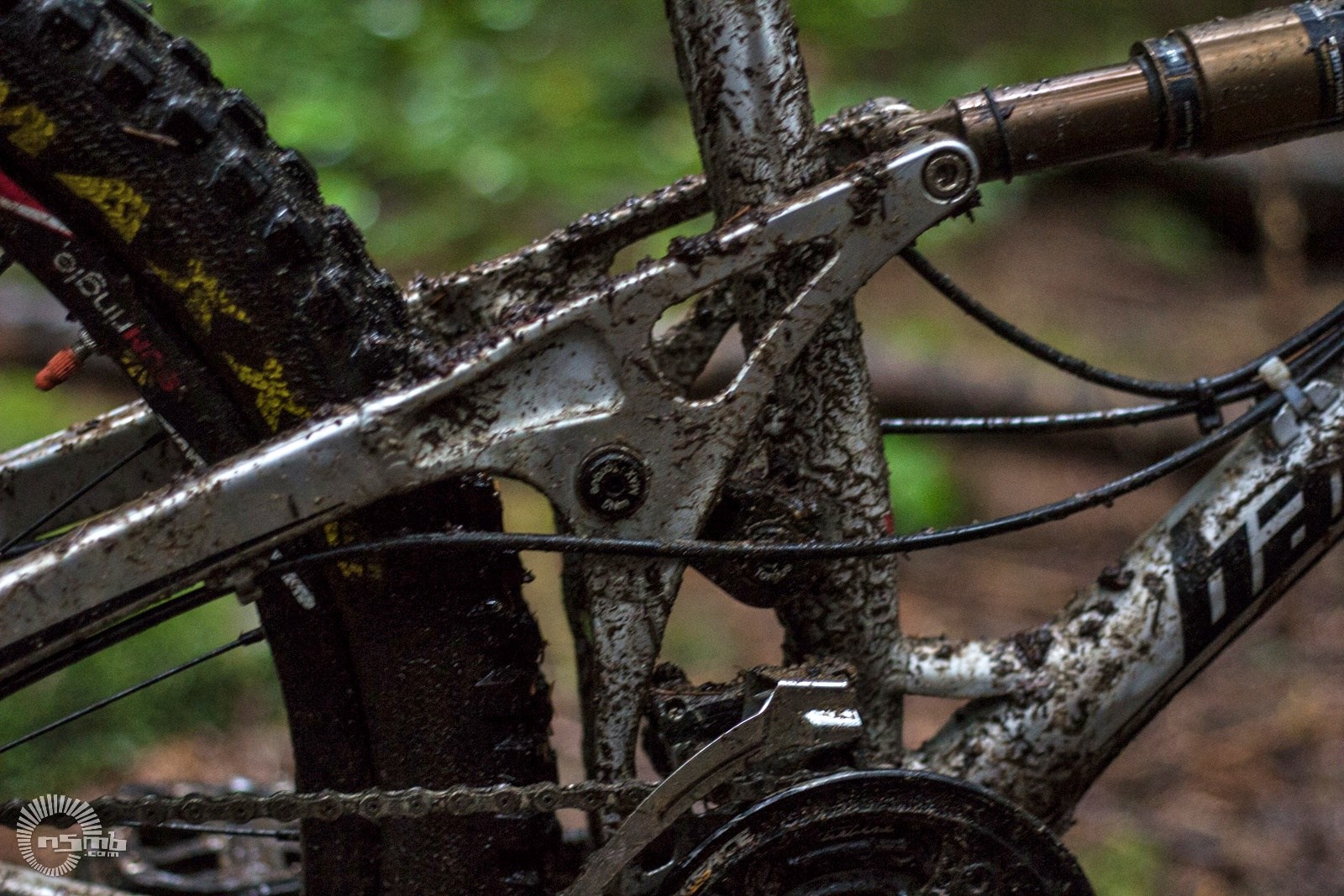
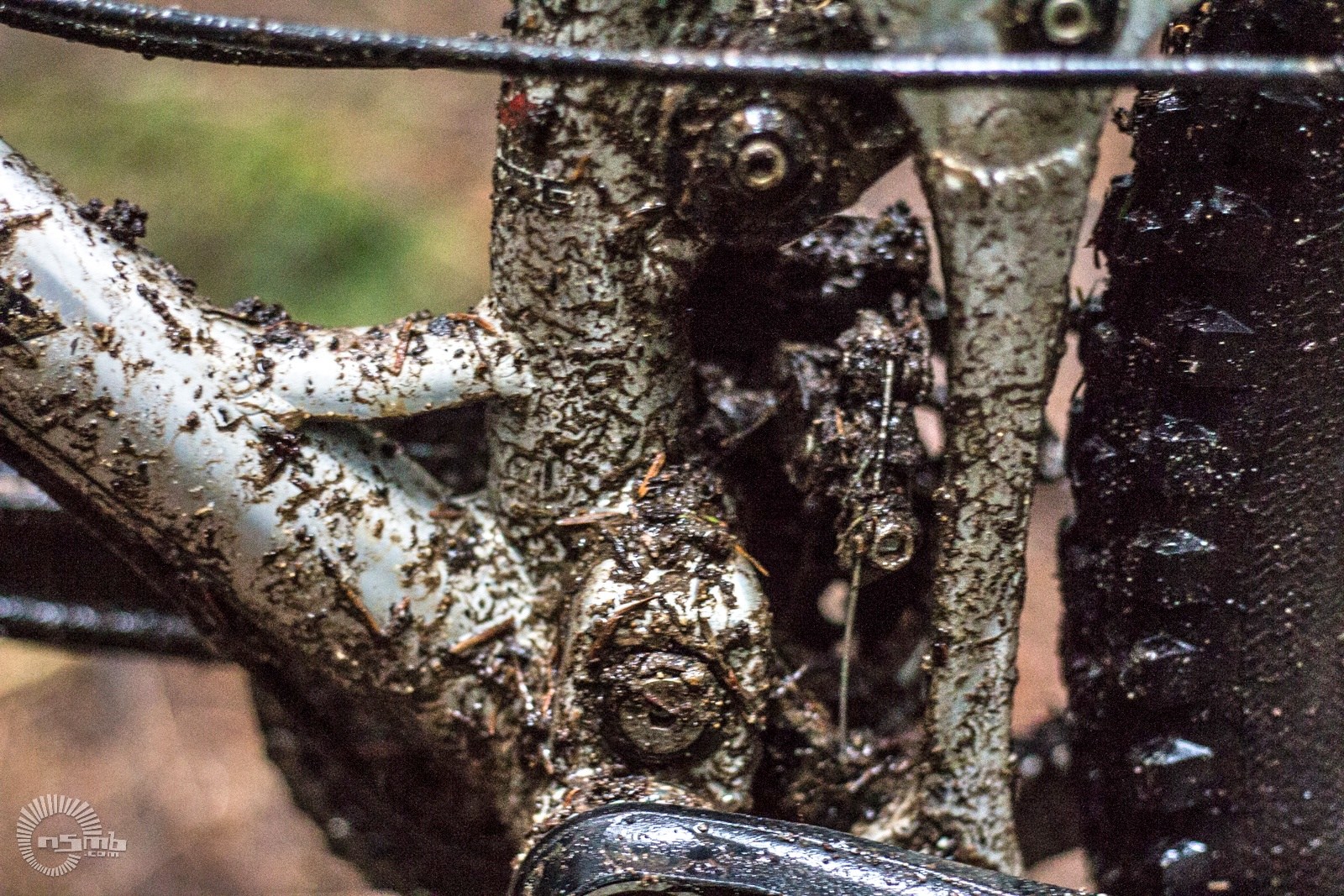
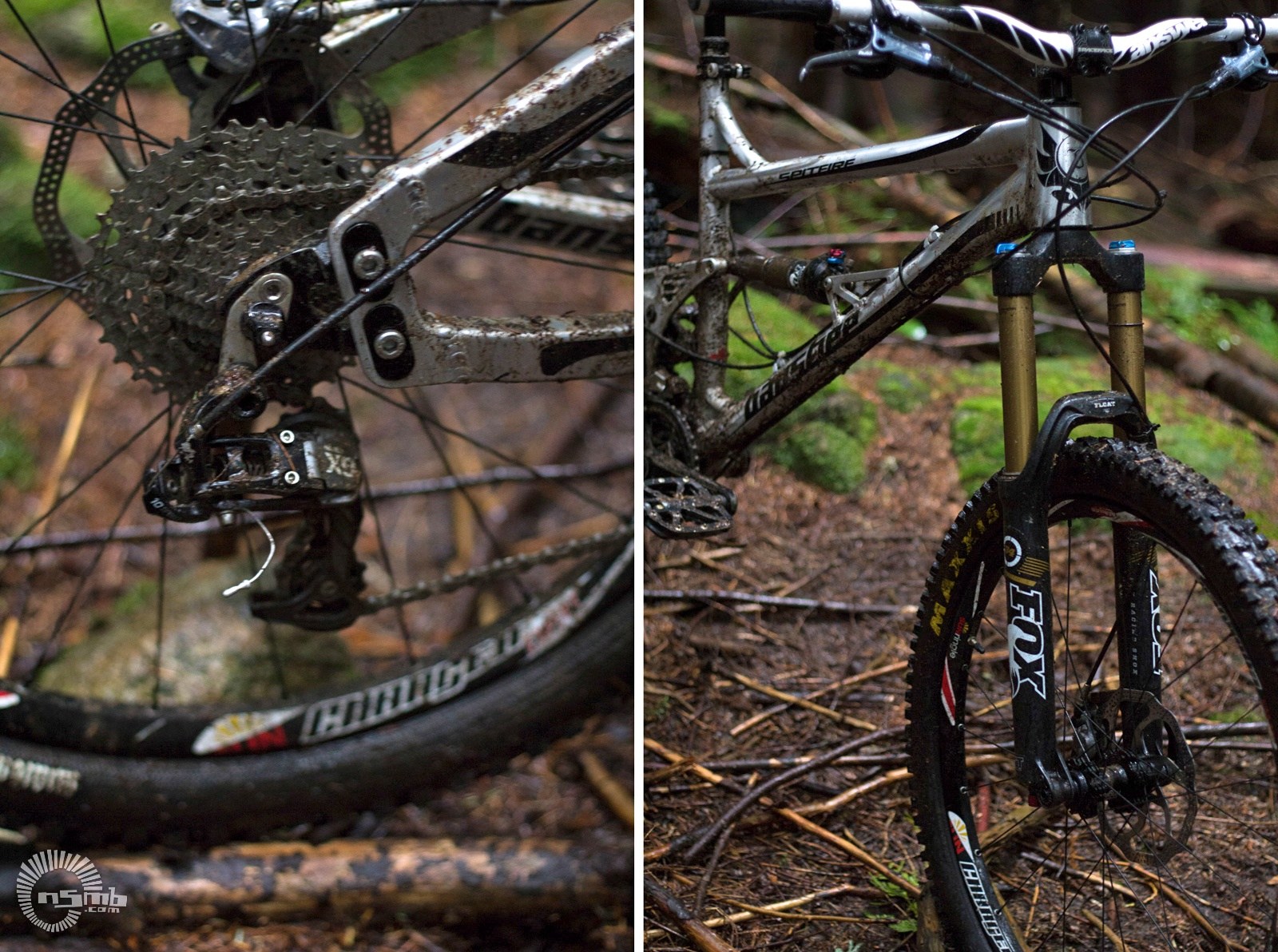
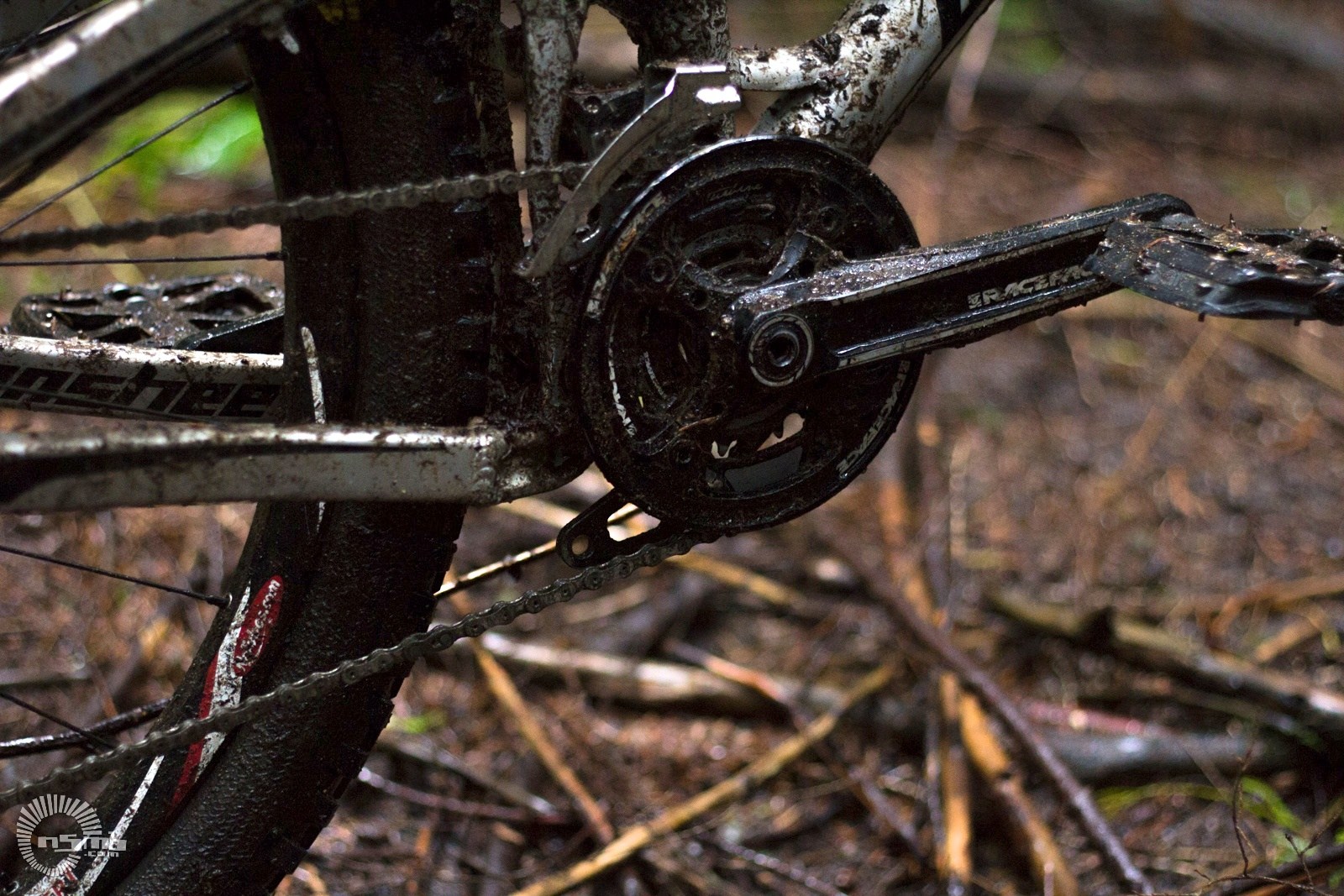
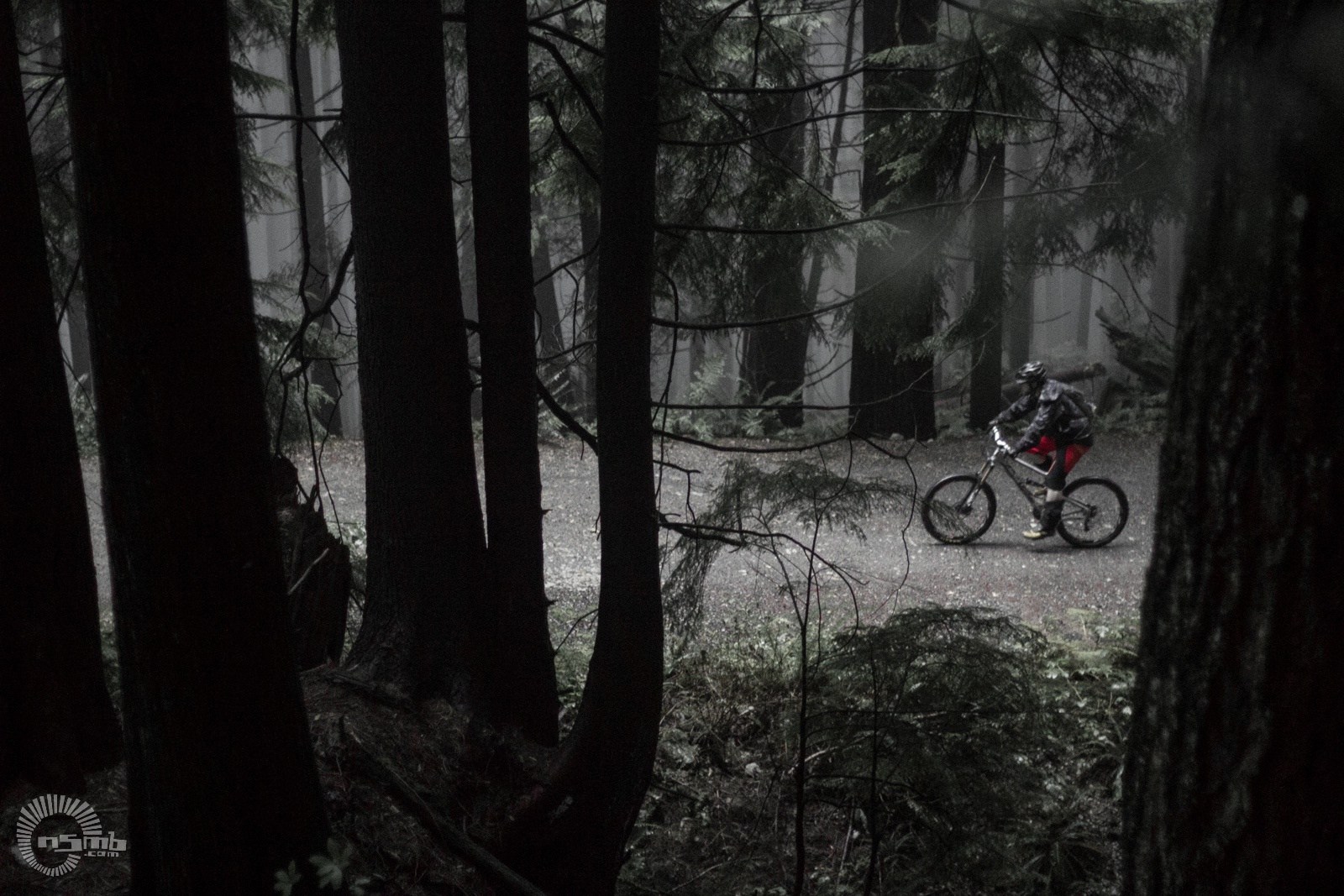
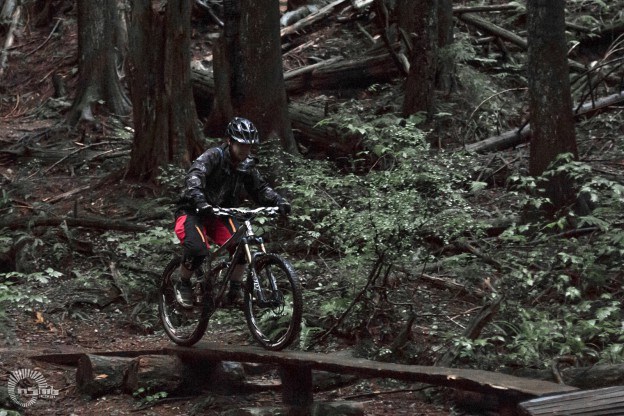
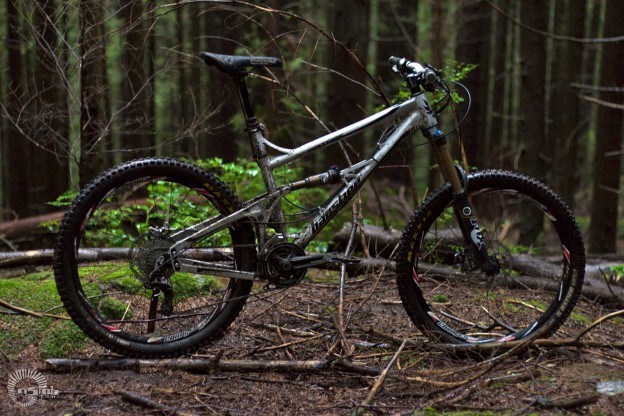







Comments
rob c
10 years, 6 months ago
great article from what seems a thorough test period from NSMB.com
I am only hearing great things about the new "K.S." Banshee frames from riders here in the UK, where admittedly we are not blessed with much of a summer, which means all-year round mud riding a true test for suspension frames
very glad to see, it seems Keith finally got to realize the true potential of his excellent designs with better engineering on the suspension pivots (the bushing design was a little "funky" as many previous owners can attest)
great work Keith! (p.s. when are we going to see a K.S. Link Rampant?)
cheers
Rob Cole
London, England
Reply
clarklewis
10 years, 6 months ago
please explain why a 140mm trail climbs poorly.
looks like about a 30-lb build, so pretty average.
Reply
Matt L.
10 years, 6 months ago
I wouldn't call it a "poor pedaler" per say. It still goes up nicely, just not at the rocket-ship pace of a bike with similar travel that was hewn from carbon fibre. It's more like a steam engine: steady, but nigh-on unstoppable once you get going.
Reply
CryenDaniel
9 years, 8 months ago
Exactly my point. I have an opportunity to test Spitty and Rune, and both pedal great when you remember what they are made for. Finally I have decided to go with Rune, mostly because of the geometry which is somehow more accurate for me, and I can tell you I did some seriously hard climbs with it. Of course a dedicated XC bike would get me there faster and with less effort… but definetely not on the way down 🙂
Reply
Paul Watt
9 years, 8 months ago
Just got a Rune as well. Gotta say, climbs like a goat compared to my beloved but heavy and slow Devinci Frantik. Climbs well, and power is so on tap on the downhill. I've found numerous short uphill sections hilariously easy where before they were only possible with a perfect gear change and hammered pedal stroke. Geometry is perfect in slack 65 w 26 wheels. Bit low for pedal strikes on some climbs but feels so bedded when going down. Like I'm inside the bike! Bike feels alive and very fast through everything, so I'm stoked!!
Reply
Morgan Taylor
10 years, 6 months ago
I rode this bike a few times, including pre-riding the Nimby course. It pedals more like a bike with more travel (and descends accordingly). Of the range of bikes with this amount of travel, it is on the sluggish end.
Reply
Krusty Rider
10 years, 6 months ago
Were you running 26″ or the 650 wheels? Looks like the 26″ but not quite sure.
Reply
Matt L.
10 years, 6 months ago
I ran 26″ wheels exclusively during the test.
Reply
Please log in to leave a comment.